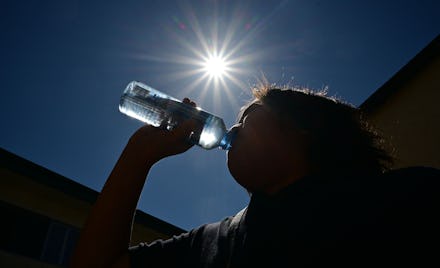California’s power grid could have a major meltdown this week
Ahead of expected scorching temperatures, the state’s grid operator warned that things might go dark.

It’s about to get hot out in California. A prolonged heat wave is expected to set in across the state starting Thursday and lasting through the Labor Day weekend, with a chance at record-setting high temperatures that touch the 115-degree mark, according to the National Weather Service. Dealing with that heat is bad enough. Doing it without the comfort of air conditioning or electricity is an absolute nightmare — and one that has potentially deadly consequences. But it looks like that’s exactly how some Californians will experience the coming heat.
This week, the California Independent System Operator (ISO) issued a warning that the excessive heat “will stress energy grid" and Californians may need to participate in “voluntary conservation” to keep things operating. What that means in practice is opt-in “blackout” periods during which residents and businesses will be asked to cut back on electricity usage. The state is basically saying, “Please turn things off now and conserve energy so that when heat gets bad, you won’t be forced to turn things off because there is no power.”
There’s good reason for this request: The stress that the grid is about to experience will be immense. According to the ISO, electricity demand is expected to top 48 gigawatts on Monday and Tuesday. That would be the highest demand it has experienced since 2017. And while it does have the capacity to support that level of demand, it’s difficult to sustain — particularly when demand stays high. According to Bloomberg, there also will be a shortfall of energy available from the reserves that California typically taps into, so things are going to get tight — and very, very sweaty.
On the Pacific coast, access to air conditioning is less common. Less than half of the 1.7 million people who live in the metro area of San Francisco have access to the home cooling option, according to the American Housing Survey. While that’s fine most of the time, when extreme heat hits, it can leave many people scrambling to escape the effects of it. It also ramps up the demand placed on the electrical grid to power these appliances, which can result in so much stress that it causes blackouts.
This is becoming an increasingly common issue across the country. Extreme weather comes rolling in, and the electric grid gets pushed beyond its capacity. It happened in Texas last year when a winter storm knocked the grid out of commission and left millions of people without power. It happened in the Pacific Northwest last summer.
Heat is the leading weather-related cause of death, and it’s not particularly close. Extreme heat can cause all sorts of health complications, including heat stroke, and hundreds of people die from conditions related to heat exposure every year in the U.S. Yet we’re still burning fossil fuels to power much of our electricity — California’s included — which is going to continue to cause extreme weather that those grids are not prepared for. At some point, the cycle has to end.